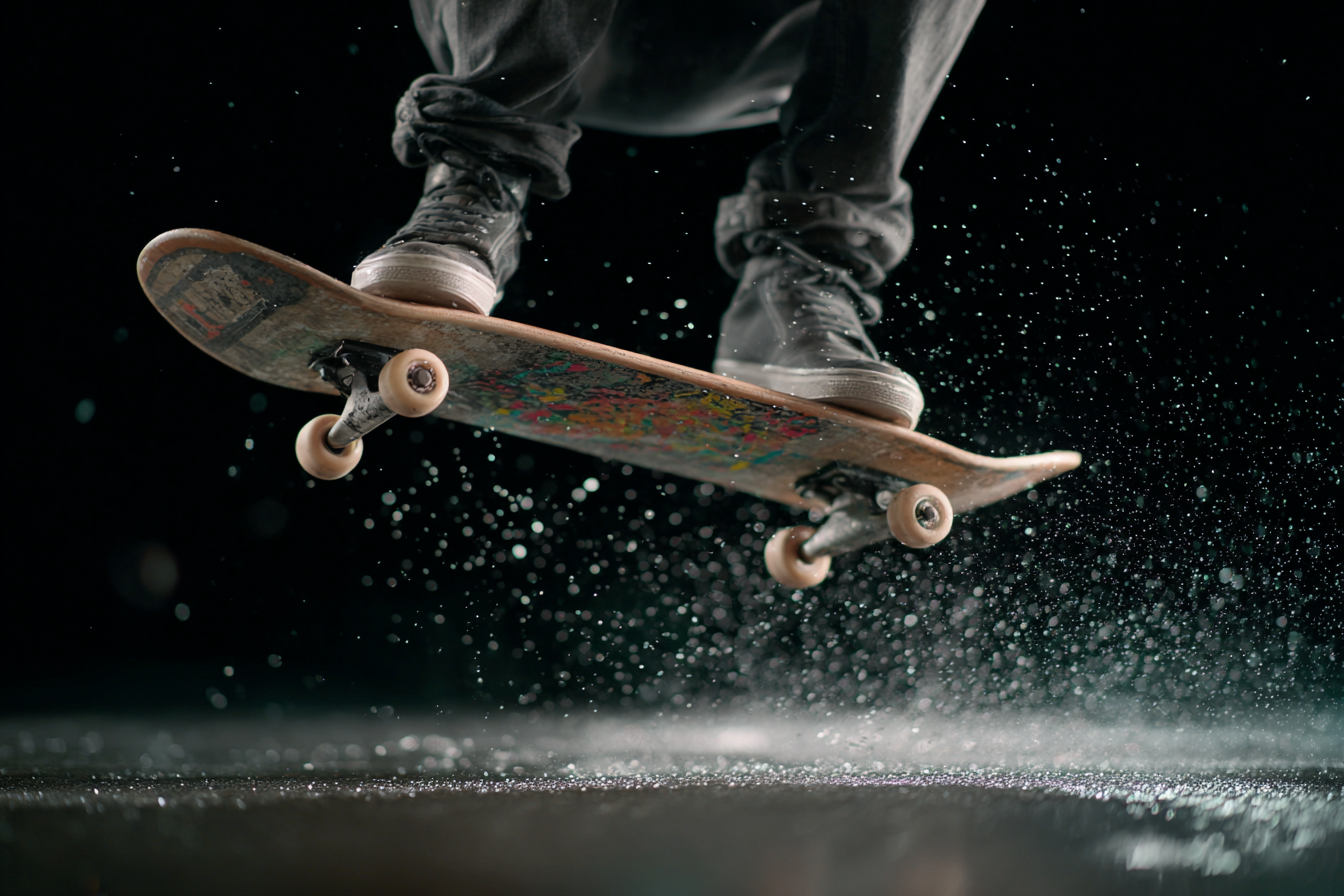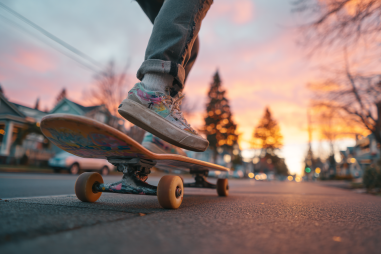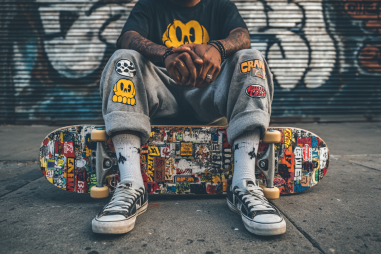Slow motion videography has become a staple in the world of skateboarding, allowing riders and filmmakers alike to showcase every intricate detail of tricks, from the flick of a board to the precise landing on pavement. This technique adds a dramatic flair and emphasizes the skill, style, and sheer athleticism involved in skateboarding, making for captivating and visually stunning footage. Whether you’re a seasoned videographer or a skateboarding enthusiast looking to step up your video game, mastering slow motion capture can truly elevate your content.
Understanding Slow Motion in Skateboarding Videos
Slow motion videography involves filming at a higher frame rate than the playback speed, which allows the action to appear slower when played back. For skateboarding, this technique is especially effective because tricks happen so fast and often involve complex movements that can be hard to appreciate at normal speed. Slow motion helps unspool those moments, revealing the precision and style that might otherwise be missed by the naked eye.
By slowing down tricks, viewers can notice subtle foot placements, timing, and balance that define a skateboarder’s technique. This not only enhances the storytelling of a skateboarding video but also creates a powerful visual impact, especially during key moments like ollies, flips, grinds, and other signature maneuvers.
Best Cameras and Frame Rates for Slow Motion
The key to great slow motion skate footage is the frame rate at which you record. The standard frame rate for most video is 24 or 30 frames per second (fps). To achieve smooth slow motion, you need to record at significantly higher frame rates—commonly 60 fps, 120 fps, or even higher.
Here are some camera options and frame rate considerations:
- Smartphones: Modern smartphones like the iPhone 13/14 Pro or Samsung Galaxy have built-in slow motion modes, often supporting up to 240 fps at 720p or 1080p resolution. These are great for casual shooting or when portability is important.
- Action Cameras: GoPro HERO series or DJI Osmo Action can shoot at 120 fps or higher in HD, making them ideal for skateboarding due to their durability and compact size.
- DSLRs and Mirrorless Cameras: Cameras such as the Sony A7 series, Canon EOS R, or Panasonic GH5 can shoot 120 fps in 1080p and often surpass that in higher-end models, allowing for gorgeous quality slow-motion footage.
Choosing the frame rate depends on the type of slow-motion effect you want. For subtle slow motion, 60 fps played back at 24 fps works well. For ultra-smooth, dramatic slow motion, shoot at 120 fps or higher.
Lighting Considerations for Slow Motion Capture
Proper lighting is crucial when shooting at high frame rates. Because you are capturing more frames per second, each frame has less exposure time, meaning less light hits the sensor. This can lead to darker, grainy footage if not properly lit.
To optimize lighting for slow motion skateboarding videos:
- Shoot outdoors during bright daylight: Natural light is often the best and easiest way to get enough illumination for high-frame-rate filming outdoors.
- Use reflectors or additional light sources: On cloudy days or shaded skate spots, adding fill light can help maintain image clarity.
- Avoid harsh shadows: Diffused lighting avoids harsh shadows, making details of tricks easier to see and improving overall image quality.
Techniques to Stabilize Slow Motion Footage
Slow motion puts motion clarity at the forefront, so shaky footage can be very distracting. Stabilization techniques play an essential role in keeping slow-motion skateboarding videos smooth and watchable.
Here are some useful approaches:
- Use a gimbal or stabilizer: Handheld gimbals like the DJI Ronin or Zhiyun Smooth series reduce shakes by mechanically balancing your camera.
- Tripods and monopods: For less movement-intensive shots, using a tripod can help ensure consistent framing.
- Digital stabilization tools: Many editing software programs offer digital stabilization—like Adobe Premiere Pro’s Warp Stabilizer or Final Cut Pro’s stabilizer—that can smooth out footage post-production.
- Practice smooth camera movements: When following skaters, use slow, controlled pans to match their speed instead of quick jerky movements.
Editing Tips for Slow Motion Effects
Editing slow motion footage properly is just as important as shooting it correctly. Once you have your high frame rate clips, you can slow them down in post-production to create stunning visuals.
Key editing tips include:
- Interpret footage at the correct frame rate: Make sure your editing software interprets your high frame rate footage correctly, converting it to standard playback speed (usually 24 or 30 fps) for smooth slow motion.
- Use speed ramps: Gradual speed changes can add dynamic interest, transitioning from normal speed into slow motion to highlight specific trick moments.
- Apply color grading: Enhance visuals with color correction to bring out vibrant and contrasting tones that complement the mood of the skate clips.
- Sync with music and sound effects: Pairing slow motion tricks with the right music beats or impactful sound design can maximize viewer engagement.
Creative Storytelling with Slow Motion Clips
Slow motion is not just a technical tool; it’s a storytelling device that can evoke emotions and deepen viewer connection with the footage. Consider these storytelling approaches:
- Highlight the progression: Show sequences where slow motion emphasizes changes in movement, like takeoff and landing, to narrate the story of the trick.
- Focus on skill and style: Use slow motion to draw attention to the skater’s technique, footwork, and creative expressions.
- Contrast speeds: Mix slow-motion clips with normal speed video for dramatic effect and rhythm.
- Incorporate environment: Show skateboarding culture, street spots, or crowd reactions in slow motion to build atmosphere and context.
Equipment Recommendations
To get started shooting high-quality slow motion skate videos, consider equipping yourself with:
- Camera: A mirrorless camera like the Sony A6400 or a GoPro HERO 12 for versatility and high-frame-rate options.
- Lenses: A wide-angle lens for capturing the entire scene and a fast prime lens for sharper details and better low-light capabilities.
- Stabilization gear: A handheld gimbal or a tripod, depending on your shooting style.
- Lighting accessories: Reflectors and portable LED panels for controlled lighting when shooting indoors or in shadowed areas.
- Editing software: Adobe Premiere Pro, Final Cut Pro, or DaVinci Resolve for advanced slow-motion editing and color grading.
Common Pitfalls and How to Avoid Them
While slow motion can make skateboarding videos captivating, there are some common mistakes to watch out for:
- Insufficient lighting: Shooting at high frame rates drastically reduces exposure time, causing underexposed footage. Avoid this by ensuring adequate lighting or adjusting ISO sensibly.
- Overly shaky footage: Handheld shooting without stabilization can ruin the smoothness slow motion demands. Invest in stabilization gear or learn steady hand techniques.
- Wrong frame rate: Recording too low a frame rate won’t give effective slow motion leads to choppy playback. Always check your settings before filming.
- Ignoring storytelling: Slow motion is powerful, but without narrative flow or context, the footage may feel monotonous. Plan your shots and edits thoughtfully.
Mastering slow motion videography for skateboarding involves a balanced combination of the right gear, technical knowledge, and creative vision. By paying attention to frame rates, lighting, stabilization, and editing, you’ll be well on your way to producing breathtaking videos that truly capture the artistry and adrenaline of skateboarding, frame by slow, stunning frame.







